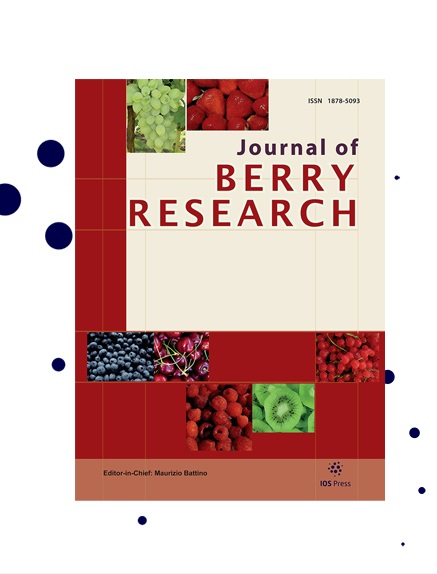Genome-wide identification and analysis of the MADS-box gene family and its potential role in fruit ripening in black raspberry (Rubus occidentalis L.)
IF 1.4
4区 农林科学
Q3 PLANT SCIENCES
引用次数: 4
Abstract
BACKGROUND: Black raspberry is a vital fruit crop with a high antioxidant function. MADS-box genes play an important role in the regulation of fruit development in angiosperms. OBJECTIVE: To understand the regulatory role of the MADS-box family, a total of 80 MADS-box genes were identified and analyzed. METHODS: The MADS-box genes in the black raspberry genome were analyzed using bioinformatics methods. Through an analysis of the promoter elements, the possible functions of different members of the family were predicted. The spatiotemporal expression patterns of members of the MADS-box family during black raspberry fruit development and ripening were systematically analyzed. RESULTS: The genes were classified into type I (Mα: 33; Mβ: 6; Mγ: 10) and type II (MIKC*: 2; MIKCC: 29) genes. We also obtained a complete overview of the RoMADS-box gene family through phylogenetic, gene structure, conserved motif, and cis element analyses. The relative expression analysis showed different expression patterns, and most RoMADS-box genes were more highly expressed in fruit than in other tissues of black raspberry. CONCLUSIONS: This finding indicates that the MADS-box gene family is involved in the regulation of fruit ripening processes in black raspberry.黑覆盆子MADS-box基因家族的全基因组鉴定与分析及其在果实成熟中的潜在作用
背景:黑树莓是一种重要的水果作物,具有很高的抗氧化功能。MADS-box基因在被子植物果实发育中起着重要的调控作用。目的:为了解MADS-box家族的调控作用,对80个MADS-box基因进行鉴定和分析。方法:采用生物信息学方法对黑树莓基因组中的MADS-box基因进行分析。通过对启动子元件的分析,预测了不同家族成员的可能功能。系统分析了黑树莓果实发育成熟过程中MADS-box家族成员的时空表达模式。结果:基因可分为I型(Mα: 33;Mβ:6;Mγ: 10)和II型(MIKC*: 2;MIKCC: 29个基因。我们还通过系统发育、基因结构、保守基序和顺式元件分析获得了RoMADS-box基因家族的完整概述。相对表达分析显示了不同的表达模式,大多数RoMADS-box基因在黑树莓果实中的表达量高于其他组织。结论:该发现提示MADS-box基因家族参与了黑覆盆子果实成熟过程的调控。
本文章由计算机程序翻译,如有差异,请以英文原文为准。
求助全文
约1分钟内获得全文
求助全文
来源期刊

Journal of Berry Research
Biochemistry, Genetics and Molecular Biology-Biochemistry
CiteScore
3.50
自引率
11.80%
发文量
21
期刊介绍:
The main objective of the Journal of Berry Research is to improve the knowledge about quality and production of berries to benefit health of the consumers and maintain profitable production using sustainable systems. The objective will be achieved by focusing on four main areas of research and development:
From genetics to variety evaluation
Nursery production systems and plant quality control
Plant physiology, biochemistry and molecular biology, as well as cultural management
Health for the consumer: components and factors affecting berries'' nutritional value
Specifically, the journal will cover berries (strawberry, raspberry, blackberry, blueberry, cranberry currants, etc.), as well as grapes and small soft fruit in general (e.g., kiwi fruit). It will publish research results covering all areas of plant breeding, including plant genetics, genomics, functional genomics, proteomics and metabolomics, plant physiology, plant pathology and plant development, as well as results dealing with the chemistry and biochemistry of bioactive compounds contained in such fruits and their possible role in human health. Contributions detailing possible pharmacological, medical or therapeutic use or dietary significance will be welcomed in addition to studies regarding biosafety issues of genetically modified plants.
 求助内容:
求助内容: 应助结果提醒方式:
应助结果提醒方式:


